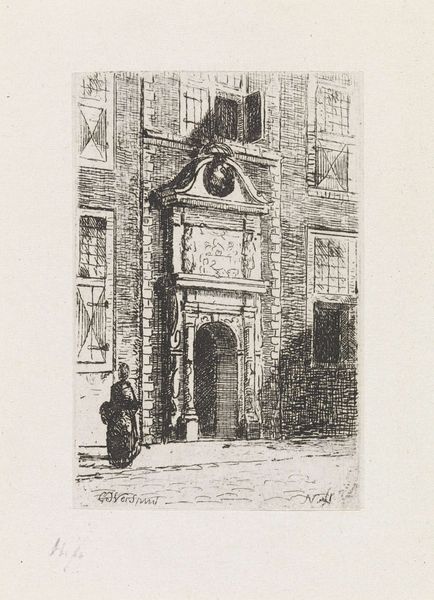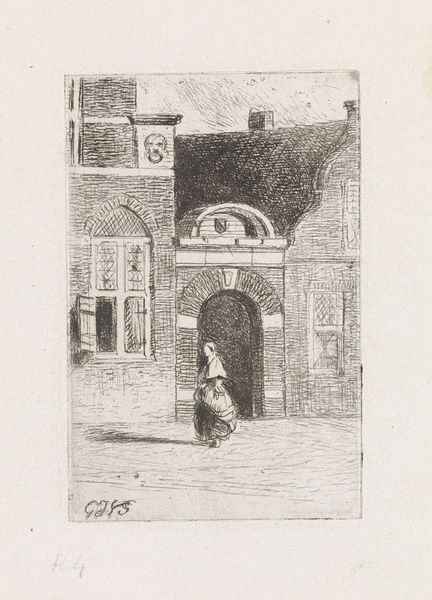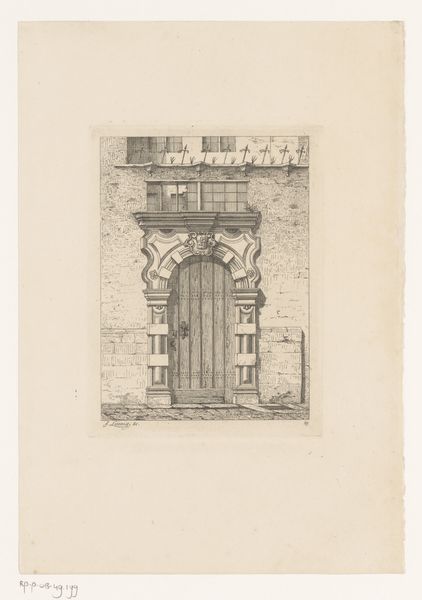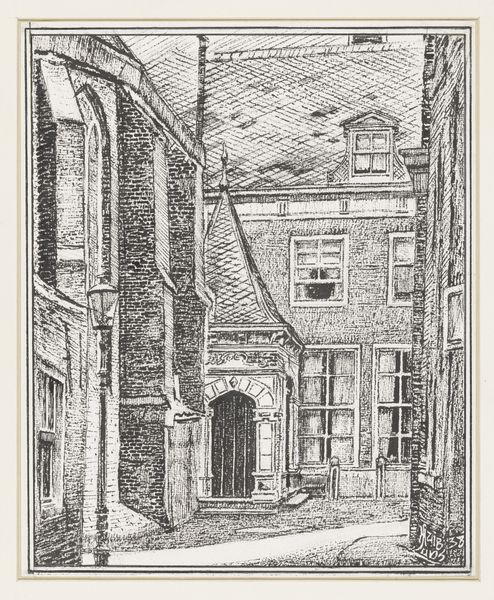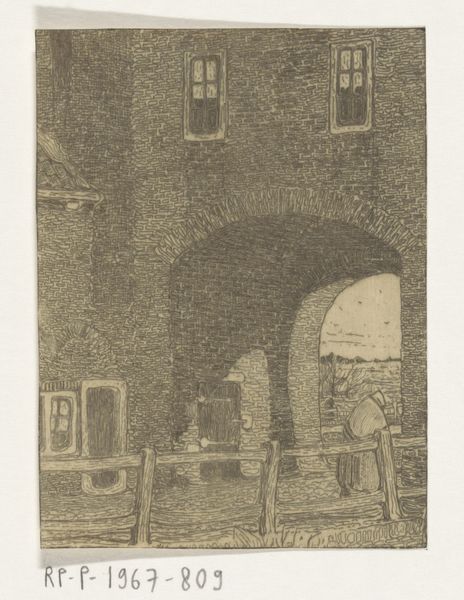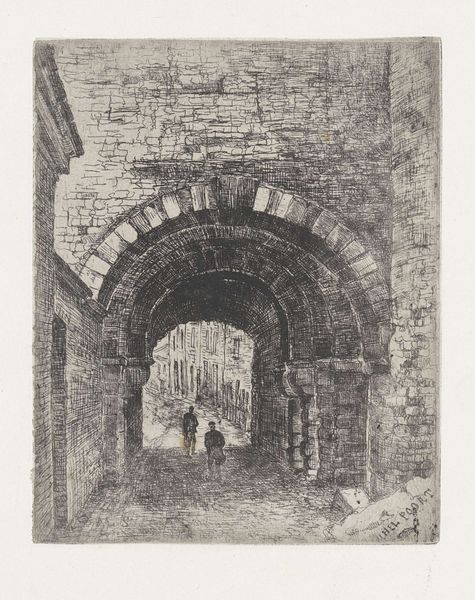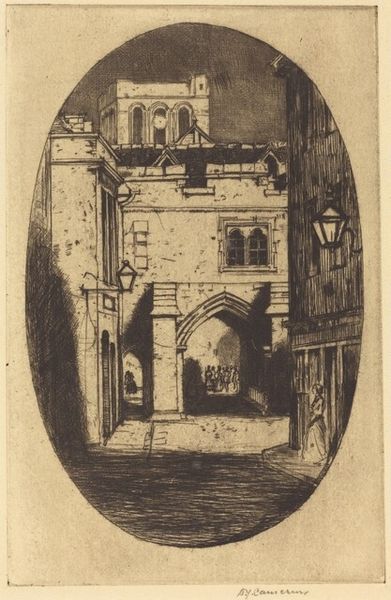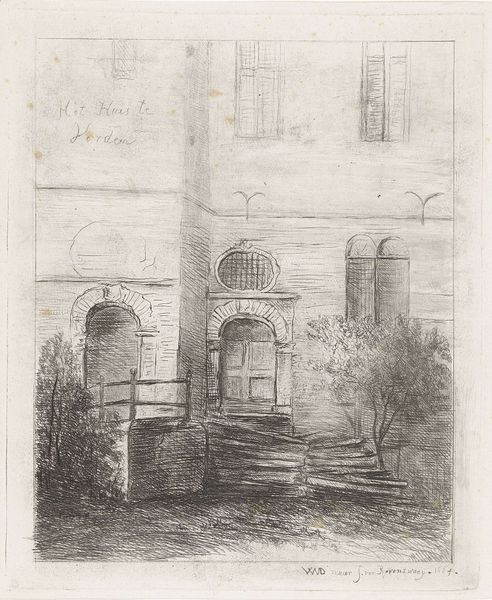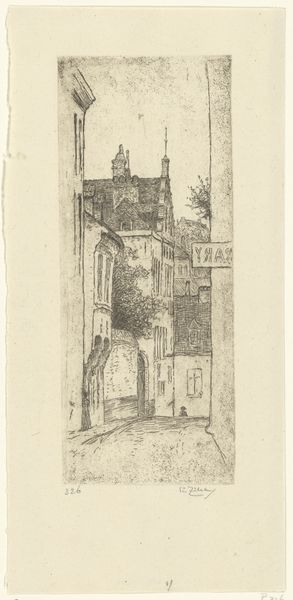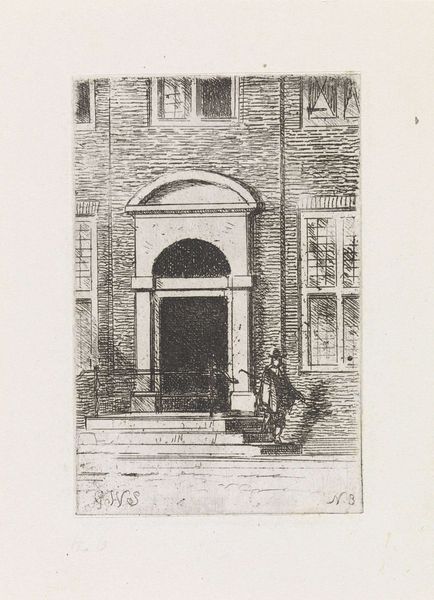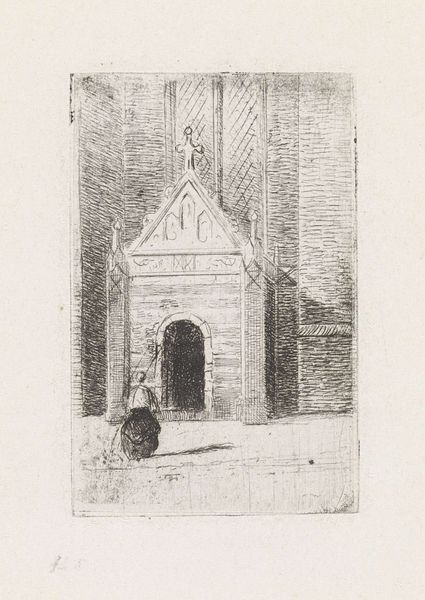
drawing, etching
#
drawing
#
etching
#
landscape
#
genre-painting
#
realism
Dimensions: height 77 mm, width 50 mm
Copyright: Rijks Museum: Open Domain
Curator: Welcome. Here we have Gijsbertus Johannes Verspuy's "Gezicht op een poort", which translates to "View of a Gate," created sometime between 1833 and 1862. It’s a beautiful etching showcasing the artist’s skill in capturing architectural details. Editor: My initial impression is one of somber contemplation. The monochromatic palette and the looming gate create a sense of enclosure, despite it being an entryway. The figures seated on the right seem burdened or reflective. Curator: Indeed, the etching captures a sense of quiet introspection. It's fascinating to consider the historical context—the 19th century was a time of great social and political upheaval. Architectural representations, particularly of older structures like this gate, often spoke to ideas of national identity and historical continuity. The etching medium itself—favored for its reproducibility—reflects the burgeoning art market and the public's increasing access to art. Editor: I'm interested in those figures you mentioned. They're positioned just to the side of the open gate, not actively entering or exiting. It raises questions about who is granted access to the spaces behind the gate, and who is made to linger outside. This placement could serve as a social commentary regarding access and belonging during the period, reflecting a divided society. Curator: It's an astute observation. Consider, too, the stylistic choices. The etching aligns with realism, emphasizing the details of the stone and the play of light and shadow. Verspuy seemingly seeks to depict the scene objectively, but, of course, perspective is unavoidable, the framing inherently expresses something of the artist’s worldview. The institutional support for realism in the mid-19th century indicates a cultural shift towards depicting everyday life. Editor: Precisely! And the deliberate emphasis on texture – the roughness of the stonework – highlights labor and craft. The building itself bears marks of age and use; its historicity a silent witness to past struggles and societal shifts. It’s an aged scene, perhaps suggesting themes of change. Curator: Absolutely. We are also seeing genre-painting tropes here that emphasize daily activities. What do we miss by not observing them? The choice of subject matter—a seemingly ordinary gate—suggests a desire to find meaning in the everyday, mirroring societal interest at that time. Editor: Thinking of these quiet moments of human interaction is beautiful. These individuals’ presence enriches the scene by offering both solace and silent commentary. The scene becomes a portrait of a historical setting that provides glimpses of society in all its forms. Curator: What powerful and divergent thoughts! The historical narrative and modern perspective have combined and transformed our experience of viewing the image and allowed a unique lens to form that wasn't present a few minutes before. Editor: This conversation showcases how art acts as a conduit between then and now. By connecting these old art forms and themes, it is clear they're still so applicable today.
Comments
No comments
Be the first to comment and join the conversation on the ultimate creative platform.
